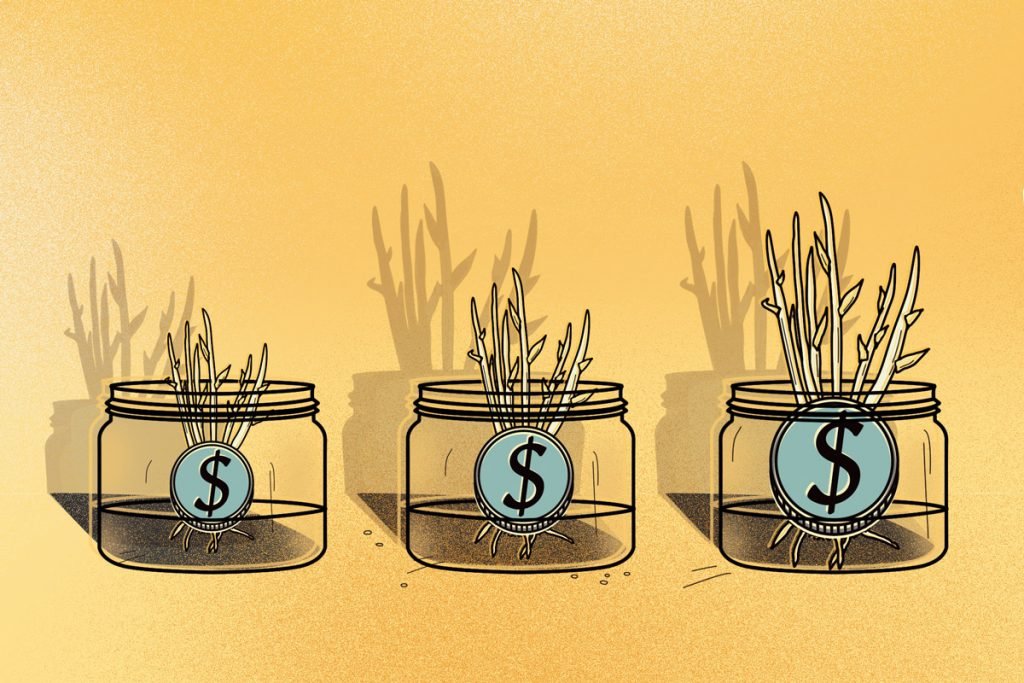by Rachel Christian, CEPF®
Senior Writer
Opening a savings account is a great way to protect your money and build your financial foundation.
You can use a savings account to achieve different financial goals, like creating an emergency fund or buying a home.
The best savings accounts feature higher-than-average interest rates and no monthly service fees. They also offer low or no minimum balance requirements.
According to the Federal Deposit Insurance Corporation (FDIC), 7.1 million Americans were “unbanked” in 2019, meaning no one in the household had a checking or savings account at a bank or credit union.
Whether this is your first time opening an account or maybe it’s just been a while, here is everything you need about how to open a savings account.
Each bank or credit union shares a few basic steps you need to follow to open your new account.
Nearly every bank and credit union in the U.S. offers a savings account. You want to find one that meets your specific needs and financial goals.
Every savings account lets you make deposits and withdrawals. Any savings account you open at an FDIC-insured bank is protected for up to $250,000.
The average annual percentage yield (APY) for traditional savings accounts is about 0.06%. Some high-yield savings accounts offer APYs between 0.5% and 1.5%. But keep in mind that interest rates change depending on economic conditions.
The APY is how much interest you earn on your money each year.
Some financial institutions may require you to meet a minimum balance requirement to qualify for a particular interest rate or avoid a fee.
If you already have a checking account, it’s usually easiest to open a savings account at the same financial institution.
Still, it pays to shop around and explore your options. You might find an online savings account with a higher interest rate than your current bank provides.
Once you choose your bank or credit union, you need to decide how to apply for your new savings account.
The three most common ways to apply for an account are:
You might be able to submit an application by mail as well.
It generally takes 10 to 20 minutes to open a savings account online.
If this is your first time opening a savings account, you might want to apply in-person at a local branch.
Each banking institution requires personal identification and documentation to open a savings account.
Gather this information now to save time during the application process.
To open a savings account, you’ll need to provide your:
You usually need to reside in the U.S. to open a U.S. bank account.
A parent or guardian must accompany a person under 18 (19 in Nebraska) to open a bank account. You generally must bring two current forms of identification for the child.
Example of identification for a minor:
Be sure to ask your bank which forms of ID they accept for people under 18.
Nearly all banks offer both individual accounts and joint accounts.
A joint account can be a good idea if you’re a parent opening an account for your child, or a married couple saving toward a common goal.
You’ll need the same documentation and information listed above for anyone else listed on the joint account.
Some banks require you to deposit a certain amount of money to get started. This minimum opening deposit can be as low as $1 or as much as $100 to $5,000.
Other banks don’t require a minimum opening deposit at all.
Accounts offering higher interest rates tend to have higher opening balance requirements.
If you open your account in person, you can use cash or a check to satisfy the minimum initial deposit.
If you open an account over the phone or online, you can use the routing and account number from an existing bank account to transfer funds.
Some banks may also let you fund your account by mailing a check or scheduling a wire transfer.
All set? It’s time to submit your application.
It can take two to five business days for a bank to verify your identity and give you access to your new account.
Once your account is established, you can set up online banking and download the bank’s mobile app. This on-the-go access makes it easy to check your balance, transfer money and monitor your account.
You can also set up direct deposit and schedule automatic recurring transfers.
Putting your savings on auto-pilot is the best way to save money consistently over time. It helps make saving money a habit instead of an afterthought.
Many banks offer savings accounts with low monthly fees, but the best accounts don’t charge any recurring fees at all.
If your savings account charges a monthly maintenance fee, it usually ranges between $4 to $5.
Many banks waive this fee if you meet certain criteria, such as setting up direct deposit or maintaining a minimum balance.
Ask your bank or credit union if it offers special programs for students, veterans or other groups. These programs often waive initial deposit and minimum balance requirements on savings accounts.
You may also avoid monthly maintenance fees by holding your savings account and checking account at the same institution.
Avoiding a monthly fee is important because most savings accounts earn very low interest rates. A $4 to $5 monthly maintenance fee will completely wipe out any potential interest and erode the value of your money.
High-yield savings accounts tend to charge higher monthly fees than standard accounts. You can usually get this fee waived by maintaining a high account balance.
Some online-only savings accounts don’t charge recurring maintenance fees or minimum balances. However, they still carry excessive withdrawal fees like traditional banks.
Until recently, a federal law known as Regulation D capped withdrawals from savings accounts to six per month.
This didn’t include withdrawals made in person, at ATMs or by mail. But it did include transfers to other accounts (including accounts at the same institution) and automatic transfers to pay bills.
In April 2020, the Federal Reserve issued a final rule to suspend the limit on savings account withdrawals.
However, some banks and credit unions still choose to impose a penalty for exceeding the usual six-withdrawals-per-month limit.
Some banks charge a fee for each withdrawal that exceeds the limit. These fees can range $5 to $15 for each additional transaction.
Other companies, such as Capital One and Citibank, won’t charge you a fee, but instead will deny any additional withdrawals for the month.
Make sure you understand any withdrawal penalties at your bank so you can avoid unexpected fees.
Banks and credit unions may charge account holders other fees, known as incidental fees. These fees are often used as a penalty to discourage certain consumer behaviors.
Make sure to read the terms and conditions of your account to see if your bank charges any of these fees, and if so, how much.
Here are some common incidental fees to look out for:
These banks have ditched overdraft fees.
Not all savings accounts are created equal.
You want to find an account with few fees, easy access and a competitive interest rate.
A traditional savings account typically earns an APY between 0.01% and 0.06%.
Some high-yield online savings accounts earn interest rates between 0.5% and 1.5%. This can help your savings grow faster.
Of course, interest rates aren’t everything. You also want to consider what you’re saving for.
For example, if you want to build an emergency fund, it makes sense to open a savings account at the same bank where you have your checking account. This way you can quickly access your money if you get hit with an unexpected bill.
Linking your savings and checking account is also a good way to avoid overdraft fees. Another benefit is simplicity: You won’t have multiple accounts spread across different banks.
On the other hand, if you’re saving for the down payment on a house or a dream vacation, you might consider opening a high-yield savings account with an online bank. This way you can earn as much money as possible over time.
It’s important to do your research if you want to find a good savings account.
Here are some important questions to consider before opening an account:
It depends.
Some banks don’t require any minimum deposit to open an account. Others charge as little as $1.
A high-yield savings account usually requires a bigger initial deposit. This can range from $100 to as much as $5,000.
Yes. Brick-and-mortar banks let you open a new savings account on their website. This is often faster and easier than going to a physical bank or opening an account over the phone.
There’s also plenty of online-only banks to choose from.
Many online banks offer higher APYs and low fees. They tend to have accessible mobile apps that make it easy to manage your finances.
Online banks also carry the same FDIC deposit insurance as regular banks, so your money is protected up to $250,000.
Money market accounts and savings accounts share many similarities. For example, money market accounts offer the interest-earning power of a high-yield savings account.
The biggest difference between the two is a money market account usually comes with its own debit card and/or checkbook.
But unlike a checking account, it isn’t intended for everyday purchases.
You’re capped at six transactions a month, just like a savings account.
You can open a money market account at many traditional and online banks.
Rachel Christian is a Certified Educator in Personal Finance and a senior writer for The Penny Hoarder.
Ready to stop worrying about money?
Get the Penny Hoarder Daily
Privacy Policy
© 2022 The Penny Hoarder. – All rights reserved.
Privacy Policy and Terms of Service | Do Not Sell My Personal Information | Cookies Settings






